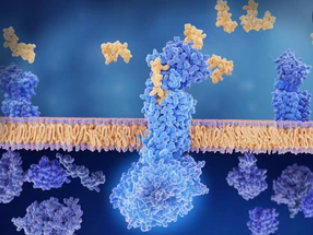Membrane Protein Research Using the iEM Platform

Membrane proteins are kinds of proteins acting as transporters, channels, receptors, and enzymes. They are ubiquitous in biology and have a wide range of functions, including cell communication, growth, differentiation, metabolism, and so on. In addition to determining how our cells coordinate communication and function, membrane proteins are key for viruses and bacteria to enter our cells. At Creative Biostructure, we can provide customized services for the characterization of membrane proteins. Based on our iEM Platform, integrated and universal electron microscopy (EM) platform, we can study the structure, kinetics, and function profiling of various membrane proteins.
Membrane Protein Research
The structural study of membrane proteins will help researchers to better understand the functions of the membrane proteins. X-ray crystallography and nuclear magnetic resonance (NMR) have traditionally been used in the structural biology of membrane proteins. However, both of them are not without their limitations. X-ray crystallography is limited by difficulties with sample crystallization and is not suitable for the analysis of highly dynamic structures, while NMR is restricted to characterizing relatively small proteins. Cryo-electron microscopy (cryo-EM) as a further complementary technique, is well suited for targets that are unsuitable for X-ray crystallography or NMR. Cryo-EM has many advantages, such as the relatively high resolution, natural conformation analysis, no need for crystallization, and minimal sample requirements.
| The Advantages and Limitations of Each Structural Biology Technique Described Above | |||
| Advantages | Limitations | Resolution | |
| X-ray crystallography | -Well developed -High resolution -Broad molecular weight range -Easy for model building | -Difficult for crystallization -Difficult for diffraction -Solid structure preferred -Static crystalline state structure | High |
| NMR | -High resolution -3D structure in solution -Good for dynamic study | -Need for high sample purity -Difficult for sample preparation -Difficult for computational simulation | High |
| Cryo-EM | -Easy sample preparation -Structure in a native state -Small sample size | -Applicable to samples of high molecular weights only -Highly dependent on EM techniques -Costly EM equipment | Fast approach to high resolution (typically sub 4 Å) |
Membrane Protein Research at the iEM Platform
Recent technological progress in the field of cryo-EM has enabled structural analysis of small-sized membrane proteins. Notably, single-particle cryo-EM as useful technique for structural analysis of large, structurally heterogeneous, and dynamic complexes, has been increasingly used to analyze membrane proteins in recent years. This technique can achieve 3D reconstruction of samples by computationally averaging multiple 2D projection images of the same particle. In order to improve the understanding of membrane protein functions, we are proud to offer high-throughput and high-resolution characterization and analysis of membrane proteins based on single-particle cryo-EM. Our services are suitable for imaging and structural analysis of small (<250kDa) and intermediate sized proteins (>250kDa) as well as large protein complexes.
The workflow of our services, including
- Membrane protein sample preparation using the lipid bilayer environment-based tools.
- Evaluation of biochemical and biophysical aspects of the protein sample.
- Sample preparation for particle cryo-EM analysis, including the preparation of negative staining and cryo-EM grids.
- Data acquisition and image processing.
- 3D reconstruction and atomic model building.
- Structural validation and analysis.
In the past several years, we have witnessed spectacular achievements of cryo-electron microscopy(cryo-EM) in determining the structure of biological macromolecules, including membrane proteins. Our service is dedicated to promoting the research, development and application of membrane proteins with the most advanced EM technology. If you are interested in our services, please feel free to contact us.
- Nwanochie, E., & Uversky, V. N. (2019). Structure determination by single-particle cryo-electron microscopy: Only the sky (and intrinsic disorder) is the limit. International journal of molecular sciences, 20(17), 4186.

